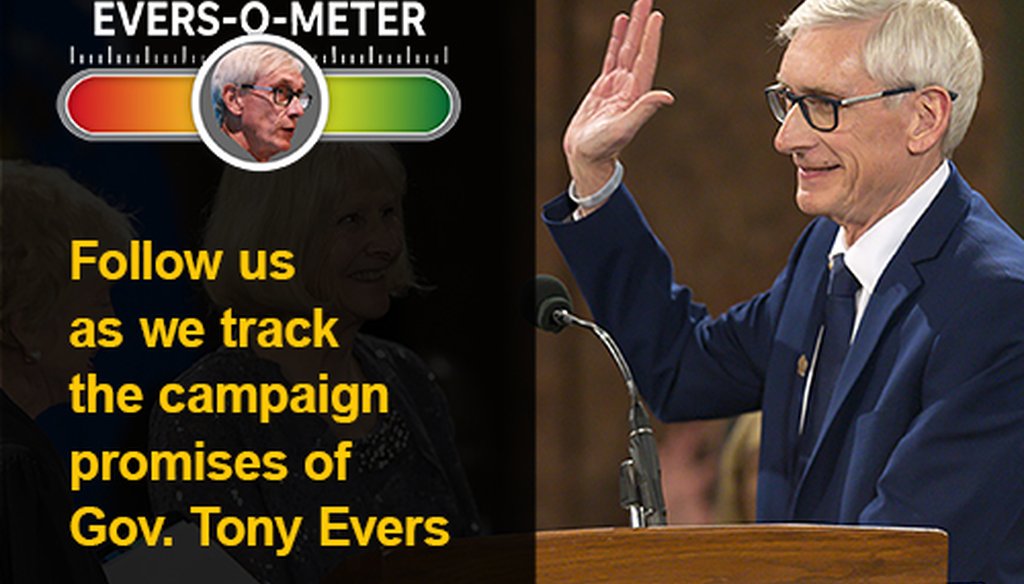Stand up for the facts!
Our only agenda is to publish the truth so you can be an informed participant in democracy.
We need your help.
I would like to contribute
No money in the latest state budget for lead abatement, but relief could come from feds

Tony Evers was sworn in as Wisconsin governor Jan. 7, 2019.
On the campaign trail, Gov. Tony Evers said he would expand the state's lead abatement efforts through tax credits and other programs.
In Wisconsin, children under age 6 are considered the most vulnerable to the effects of lead exposure, according to the state Department of Health Services. In 2018, 4.5% of Wisconsin children under 6 had blood lead levels of 5 mcg/dL or above, the state's most recent data show.
During his first years in office, Evers established a lead pollution czar to lead a statewide push to eradicate lead contamination, and state Republicans approved a smaller share of the dollars he'd asked for in his first budget — $14 million — to fund lead abatement in homes occupied by low-income children and pregnant people who are eligible for government assistance.
Evers also proposed in his first budget using state funds to cover costs of replacing lead service lines, a provision Republicans removed.
In his 2021-23 budget, Evers tried again to dedicate $40 million to covering costs of replacing those lines. Republicans rejected it again.
But the governor has signaled that he will send federal stimulus money to the effort. That includes in Milwaukee, where leaders are planning to chip in American Rescue Plan Act money to continue replacing the nearly 70,000 lead service lines still left in the city.
Though Evers has largely been unsuccessful at state-funded efforts to boost lead abatement, federal dollars could help advance the state's work.
Because this is the final budget of Evers' term, and because the governor is instead looking to stimulus money to help address the issue, we rate this Compromise.
Our Sources
Office of Gov. Tony Evers
